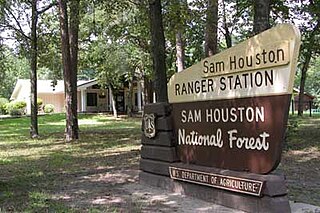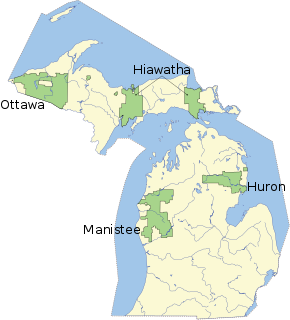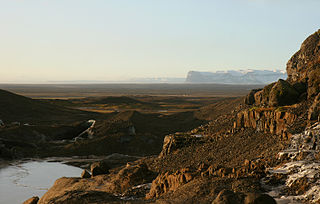
Not to be confused with the county in the Republic of Ireland, County Roscommon.

Oscoda County is a county in the U.S. state of Michigan. As of the 2010 United States Census, the population was 8,640, making it the fifth-least populous county in Michigan, and the least populous county in the Lower Peninsula. The county seat is Mio, an unincorporated community near the center of the county.

Grayling is a city in the U.S. state of Michigan and the county seat of Crawford County. The population was 1,884 at the 2010 census.

Mio is an unincorporated community in the U.S. state of Michigan. It is the county seat of Oscoda County and is situated along the boundary between Mentor Township on the east, Big Creek Township on the west, and Elmer Township to the northwest.

Kirtland's warbler, also known as the jack pine warbler, is a small songbird of the New World warbler family (Parulidae), named after Jared P. Kirtland, an Ohio doctor and amateur naturalist. Nearly extinct just 50 years ago, it is well on its way to recovery. It requires large areas, greater than 160 acres, of dense young jack pine for its breeding habitat. This habitat was historically created by wildfire, but today is primarily created through the harvest of mature jack pine, and planting of jack pine seedlings.

Northern Michigan, also known as Northern Lower Michigan or Upper Michigan, is a region of the U.S. state of Michigan. A popular tourist destination, it is home to several small- to medium-sized cities, extensive state and national forests, lakes and rivers, and a large portion of Great Lakes shoreline. The region has a significant seasonal population much like other regions that depend on tourism as their main industry. Northern Lower Michigan is distinct from the more northerly Upper Peninsula and Isle Royale, which, obviously, are also located in "northern" Michigan. In the northern-most 21 counties in the Lower Peninsula of Michigan, the total population of the region is 506,658 people.
The protected areas of Michigan come in an array of different types and levels of protection. Michigan has five units of the National Park Service system. There are 14 federal wilderness areas; the majority of these are also tribal-designated wildernesses. It has one of the largest state forest systems as well having four national forests. The state maintains a large state park system and there are also regional parks, and county, township and city parks. Still other parks on land and in the Great Lakes are maintained by other governmental bodies. Private protected areas also exist in the state, mainly lands owned by land conservancies.

Ludington State Park is a state park located just north of Ludington, Michigan between the shores of Lake Michigan and Hamlin Lake. The park encompasses nearly 5,300 acres (2,100 ha) and contains several ecosystems, including: forests, sand dunes, a dam, a Great Lake, and a river.

The Sam Houston National Forest, one of four National Forests in Texas, is located 50 miles north of Houston. The forest is administered together with the other three United States National Forests and two National Grasslands located entirely in Texas, from common offices in Lufkin, Texas. The units include Angelina, Davy Crockett, Sabine, and Sam Houston National Forests, plus Caddo National Grassland and Lyndon B. Johnson National Grassland. There are local ranger district offices located in New Waverly.

Lumberman's Monument is a monument dedicated to the workers of the early logging industry in Michigan. Standing at 14 feet, the bronze statue features a log surrounded by three figures: a timber cruiser holding a compass, a sawyer with his saw slung over his shoulder, and a river rat resting his peavey on the ground. The granite base of the statue is engraved with a memorial that reads "Erected to perpetuate the memory of the pioneer lumbermen of Michigan through whose labors was made possible the development of the prairie states." It is also inscribed with the names of the logging families who dedicated their time and efforts to the industry in the area. It was built in 1931, dedicated in 1932 and is managed by the USDA Forest Service. It is located in the northeastern part of the Lower Peninsula of Michigan along the Au Sable River within Huron-Manistee National Forests. Access to the park is on River Road, which intersects M-65 west of Oscoda, Michigan. Monument Road, from East Tawas, also leads directly to the monument, which is in Oscoda Township in Iosco County. The monument is part of the River Road Scenic Byway, a 22-mile (35 km) drive between Oscoda and South Branch that runs parallel with the beautiful Au Sable River. It is a designated National Scenic Byway.
The Nordhouse Dunes Wilderness is a 3,450-acre (14.0 km2) listed wilderness area within the Manistee National Forest. It is located north of Ludington, Michigan, and is best known for its 4 miles (6.4 km) of undeveloped Lake Michigan shoreline.

The Au Sable State Forest is a state forest in the north-central Lower Peninsula of Michigan. It is operated by the Michigan Department of Natural Resources.

Fairview is an unincorporated community in Comins Township, Oscoda County in the northeastern Lower Peninsula of the U.S. state of Michigan. It is at the intersection of routes M-33 and M-72 at 44°43′30″N84°03′04″W. It is considered the wild turkey capital of Michigan.
Bull Gap is a 60-acre (240,000 m2) hill climb area located in Michigan and links over 115 miles (185 km) of trails for legal off-road vehicle (ORV) use.

Water and Woods Field Service Council is a field service council of the Michigan Crossroads Council that serves youth in the central and northeastern Lower Peninsula of Michigan. The Council is headquartered in Flint, Michigan with service centers located in Auburn, Lansing, and Port Huron. The Water and Woods Field Service Council is the result of a merger in 2012 of Lake Huron Area Council, Blue Water Council, Tall Pine Council and Chief Okemos Council.

The River Road National Scenic Byway is a National Scenic Byway and National Forest Scenic Byway in the US state of Michigan. This 23 1⁄2-mile-long (37.8 km) byway follows M-65 and River Road; it extends eastward into the Huron National Forest and ends in the historic community of Oscoda near Lake Huron. The road parallels the historic Au Sable River which has historically been a major transportation route for floating Michigan’s giant white pine from the forest to the saw mill towns on Lake Huron. Along its course, the roadway offers access to several recreational areas as well as the local scenery. The section of the River Road that follows M-65 was added to the State Trunkline Highway System in the 1930s. The River Road was given National Forest Scenic Byway status in 1988, and National Scenic Byway status in 2005.



























